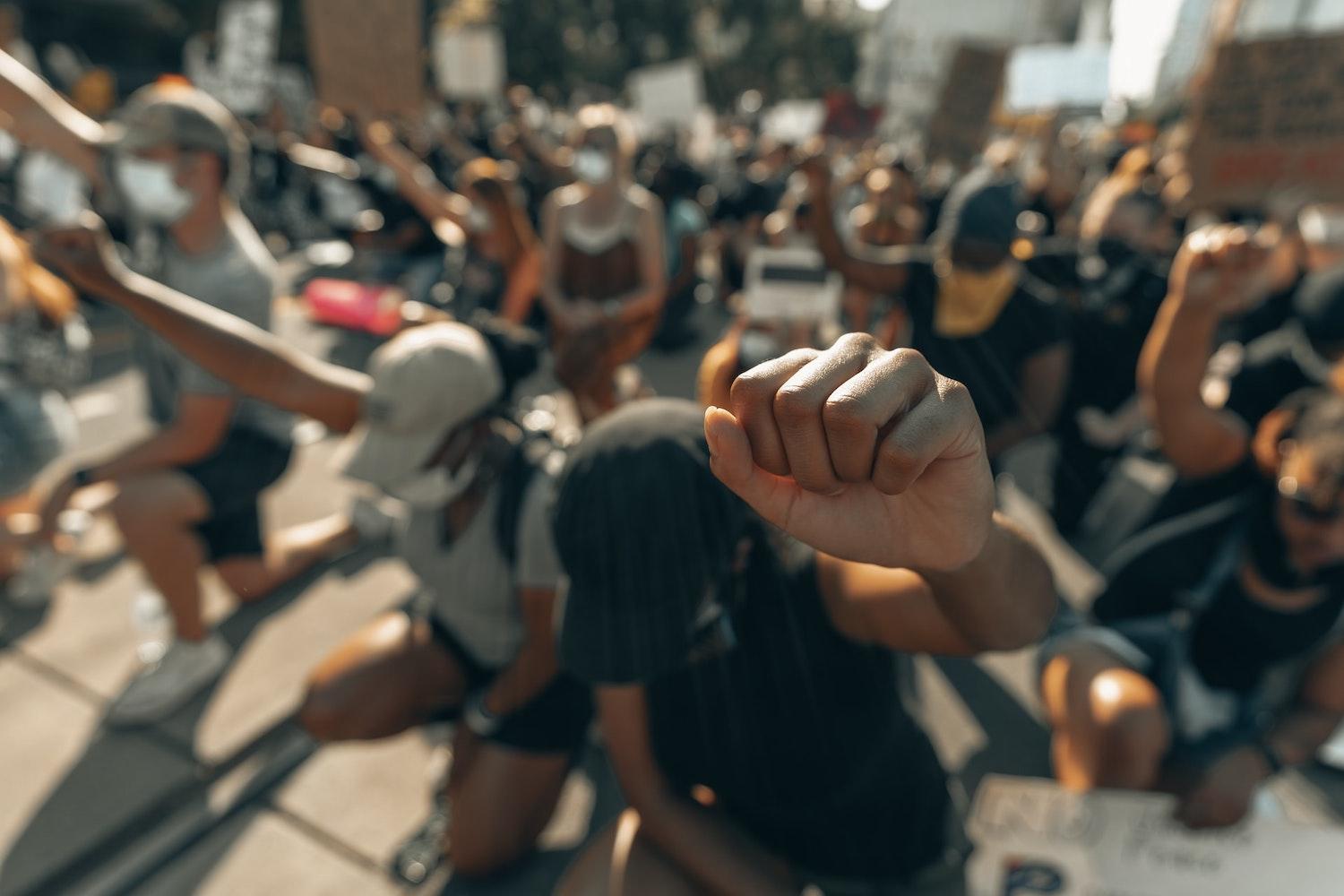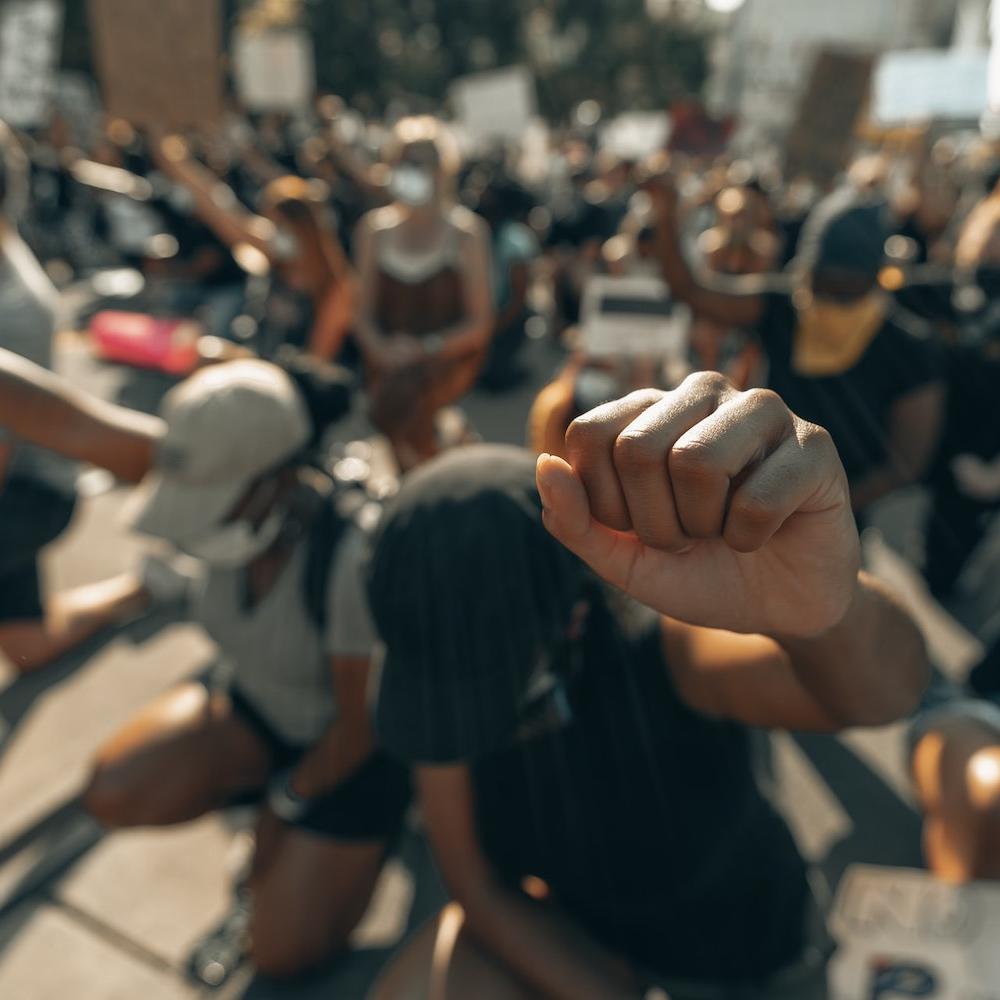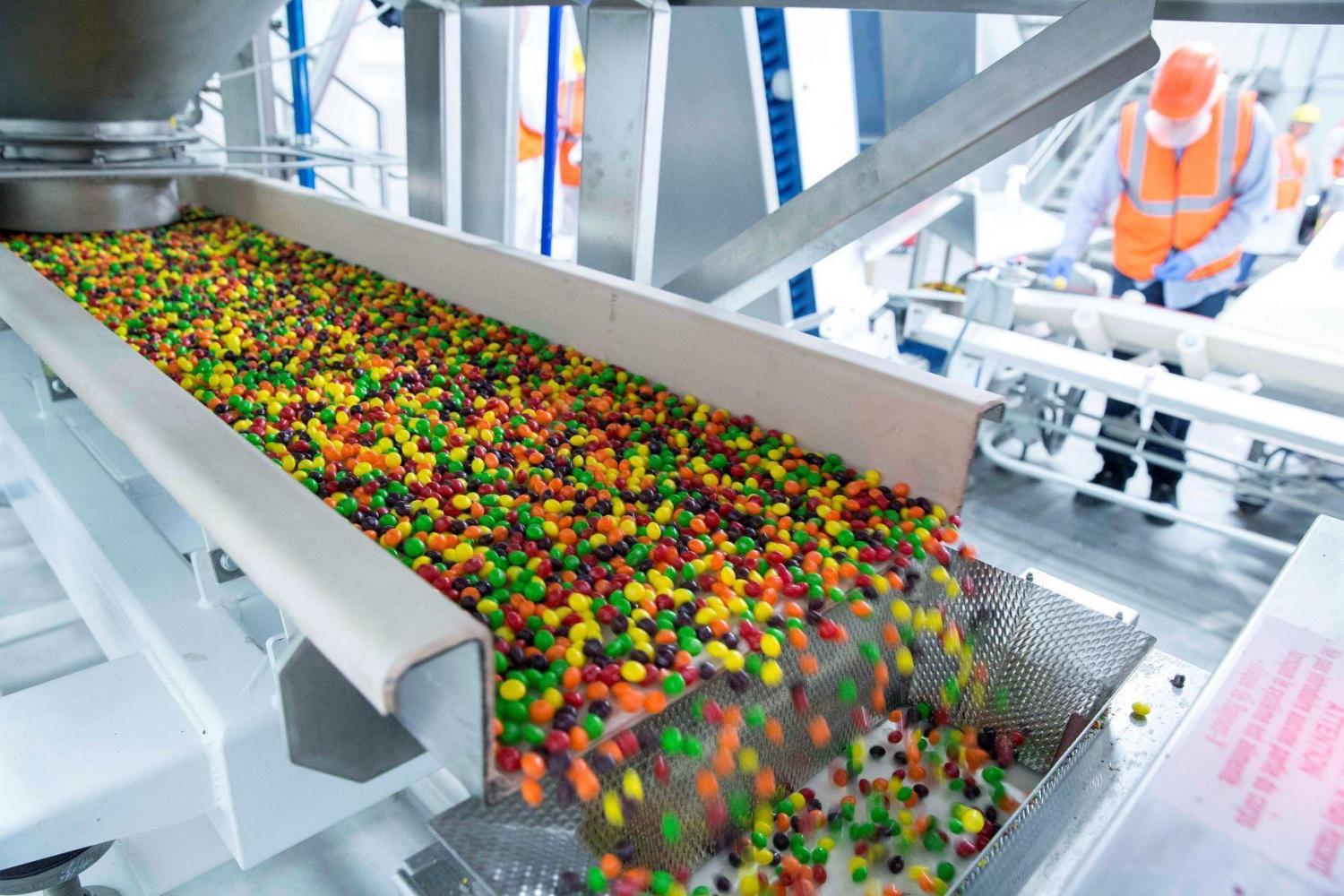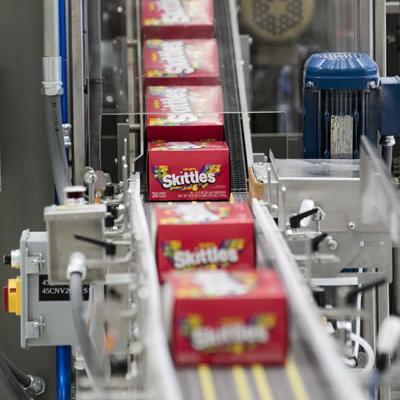The Cross-Sector Movement to Scale Sustainable Forestry in the U.S.


As consumers and the general public grow more concerned about deforestation and its links to climate change and natural resource depletion, pressure is growing on large brands to show they are a part of the solution.
“It’s important to realize the wide range of benefits forests provide in addition to the products we all use every day,” said Chris McLaren, chief marketing officer at the Forest Stewardship Council (FSC), an independent not-for-profit organization that promotes the responsible management of the world's forests. “Forests clean the air we breathe and the water we drink [and] provide habitat for 80 percent of terrestrial biodiversity. 1.6 billion people depend on forests for their livelihoods.”
Brands have a unique role to play: As major buyers of paper pulp, cardboard and other fiber-based packaging materials, they can drive system-wide change. Moreover, as concerns about single-use plastic and its low recyclability grow, paper and plant-based packaging could be a sustainable alternative.
So it’s no surprise that companies are making increasingly ambitious pledges to procure more recycled and certified sustainable materials. In this space, Procter and Gamble, or P&G, is aiming to lead. P&G is sourcing 100 percent of its wood pulp from certified sources today, with a goal of 75 percent from FSC-certified sources by 2022 and an ambition to reach 100 percent FSC by 2030. P&G is not alone, with other brands including HP, L’Oreal and Nestle making similar commitments and thus making an increase in available FSC-certified working forests crucial. But, of course, commitments require action in order to be met.
One big challenge for sourcing sustainable forest fibers
One major challenge is that there aren’t enough FSC-certified forests in certain markets to meet the demands of every company, in every industry, in a responsible way.
“While the market for all manner of FSC-certified products is currently rising rapidly worldwide, there are places where certified forests’ harvested products lack the right kinds of buyers, while in many other instances, demand far outstrips supply,” McLaren said.
Supply gaps and inability to source sustainably are some reasons why Global Canopy, a nonprofit tracking zero-deforestation commitments, found that most companies were not on pace to meet their goals as of last year.
Entities like FSC were formed to help brands and consumers make better supply chain choices. When it comes to certification, FSC has become well-known for many reasons. Its standards are strong and include 70 principles and criteria ranging from ecosystem conservation, to labor, human and Indigenous Peoples’ rights. It’s also a global organization, meaning it can provide certified materials to brands that operate in numerous markets.
Still, that doesn’t mean brands can be passive and merely rely on FSC. Ensuring a sustainable supply of materials means being proactive. Only by working with suppliers, certification bodies, conservation groups and communities will companies create the environment necessary to reach their goals, both now and in the future.
“Forests don’t grow overnight, so the decisions we make today will impact the future of forests,”
said Lois Forde-Kohler, family care sustainability director at P&G. “That’s why a sustainable, responsible forestry practice is essential to ensuring that you have wood fiber in the future.”
Working with growers to expand certified sustainable forests
Creating more incentives for growers to become FSC certified — and giving them the tools and capital to do so — will bring more certified fiber to market while ensuring more forest acreage is managed responsibly.
One model is the partnership between P&G and the Four States Timberland Owners Association, an FSC certification group operating in Arkansas, Texas, Oklahoma and Louisiana. P&G plays a unique role within this partnership, as it supports the expansion of FSC certification both to increase FSC supply for its products and to help reward Four States landowners for their responsible forest management practices — a win-win-win for the company, landowners and the environment.
“Part of what we’ve done there is to help share with landowners that people really appreciate the value of certification,” Forde-Kohler told us. “We have organized tours to introduce landowners to the FSC certification standard, what’s required and how one can participate.”
The effect has been positive: By showing the clear case for sustainable practices and the long-term value they bring, growers are more willing to undergo the certification process. “There is definitely an increase in the number of certified acres from when we engaged,” Forde-Kohler said.
Partnerships are especially important, as most U.S. timber comes from smallholder woodlands that can face financial and logistical challenges in getting certified on their own. FSC sees potential in this model to enhance the viability of sustainable forestry across the US.
“We will need to develop more partnerships like this, and at greater scale, if we are to fulfill our mission and ensure all working U.S. forests are well-managed for the long-term future,” McLaren told us.
Now, the question is how to scale this model so there is enough FSC-certified material for all brands to meet their sustainability goals, while also protecting and restoring forests in critical regions across the U.S., Canada, Indonesia, Europe and elsewhere. To do its part, P&G has set an ambition to reach 100 percent FSC-certified fiber use by 2030.
“It is challenging — one of the key pieces in that work is ensuring that our suppliers understand our goals, why it's important to us, and why or how it's driving our procurement decisions,” Forde-Kohler explained. “It’s all about persistence.”
As forests face increasing pressure from human development and climate change, ensuring that toilet paper, packaging, and other wood fiber-based products aren’t sourced from virgin forests will be key in ensuring the future of a healthy planet. As P&G’s experience shows, active brand engagement, partnerships, and innovation will be key in meeting sustainable sourcing challenges head on.
This article series is sponsored by Procter & Gamble and produced by the TriplePundit editorial team.
Image credit: Matthew Smith/Unsplash
Beyond Your Latte: Supply Chain Shortages Plague Numerous Industries


If you are craving an iced brown sugar oat milk shaken espresso from Starbucks, you may need to wait. Supply shortages, including cups, coffee syrup, cake pops, oat milk and coffee stoppers are affecting certain locations. Likewise, Chick-fil-A also reported a shortage of sauces in May in some markets and supposedly asked employees to ration supplies. The timing couldn’t be worse for restaurants and cafes as food and beverage sales are increasing after a pandemic-fuel decline.
Supply shortages are not limited to one industry. Cars, bikes, electronics, fitness equipment, and even houses are in short supply in various markets around the globe. Numerous factors have caused material shortages, including factory closures to prevent the spread of the virus, congested shipping routes and unpredictable consumer demand.
So, what’s causing these shortages?
Everything from raw materials to a global microchip shortage is crippling many companies’ production and distribution. Supply chain deficiencies are limiting economic activity and growth by extending lead times and boosting material and transportation costs. Ultimately, these supply bottlenecks are causing goods to become more expensive. This could last a while; Goldman Sachs doesn’t expect these supply chain supply woes to ease until early 2022.
According to the New York Times, this crisis is due in part to the widespread use of lean manufacturing, an approach that discourages the stockpiling of materials to boost efficiency. Under lean manufacturing, plants stock just the right amount of materials and parts, allowing the company to be agile in the face of market changes. Toyota helped revolutionize the auto manufacturing industry by employing lean manufacturing but this also relies on materials and components being readily available. Add a global pandemic into the equation and this lean approach creates shortages.
Supply chain issues are also due in part to the rising demand for goods. “The success of our vaccination campaign surprised many people, and so they weren’t prepared for demand to rebound,” said Sameera Fazili, a deputy director of the White House National Economic Council, said at a recent news briefing.
Business agility no longer a buzzword; it’s the new reality
In the face of supply shortages, businesses need to maintain consumer trust while finding solutions. Starbucks says it is using technology to help gauge expectations. Its app states which products are available, so consumers know in advance if a shortage may limit the availability of their favorite items. Also, Starbucks is temporarily halting the production of some lower-selling items to focus on higher-sales ones.
The restaurant industry is also facing a labor shortage, making it increasingly difficult to attract new employees. This shortage is exacerbated by the opening of indoor dining and lifting capacity limits in some areas, requiring a larger staff. To respond, many restaurants are offering perks for new employees, such as retention bonuses and referral fees.
Is a governmental response to the supply chain problem enough?
The Biden administration recently completed a review of supply chains and created a 250-page report finding that shortages are a threat to national security and economic stability. The White House also recently launched a task force to address the supply chain issues found in the semiconductor, agriculture, construction and transportation sectors.
The administration’s plan seeks to mitigate supply shortages by using the might of the federal government. Some of the action items include the Energy Department releasing blueprints for lithium batteries to help shift the U.S. to electric vehicles. The Department of Health and Human Services will use the Defense Production Act for a public-private partnership in manufacturing essential pharmaceutical drugs. The Interior Department plans to determine where critical minerals can be mined and processed. Meanwhile, the Commerce Department intends to boost cooperation and investments in the semiconductor industry.
“Our approach to supply chain resilience needs to look forward to emerging threats from cybersecurity to climate issues,” added Fazili. “And so, we are future-proofing.”
Image credit: Erik Mclean/Unsplash
A Mandate for Accountability in Business and Policing


This article on business and policing was co-written with Mackinzee Macho, a program manager in the Regenerative Justice Cities and Regenerative Design Programs at the Foresight Lab. Macho has delivered podcasts and written essays highlighting her program areas and plans on teaching courses and convening dialogues on these topics as well. She is a candidate for the Bachelor of Arts in Environmental Science at Carthage College. She is currently considering the pursuit of graduate studies in International Diplomacy.
The social license is an unspoken set of “golden rules” for social interactions. This shared ethical framework guides our behavior, influences our day-to-day relationships, and determines what is appropriate and culturally acceptable. In the wake of the 1992 Rio Earth Summit, a cognate of this idea emerged in the business world: the social license to operate, meant to communicate a form of social contract between the world of commerce, companies and greater society.
In practice, the social license to operate is an empty notion. Monstrously egregious conduct goes largely unpunished (think: Union Carbide/Dow in Bhopal in 1984; BP/Deepwater Horizon in the Gulf of Mexico in 2010, or the actions of any predatory bank in the run-up to the global financial meltdown in 2007-2008). Self-serving corporate policies and actions persist in the business world simply because many government regulators have neither the spine, the tools, nor the clear-eyed sense of honor to close down businesses that operate like predators in the larger societal ecosystem.
In parallel to these realities, we find ourselves at a cultural moment of reckoning regarding another social license to operate. Police departments across our land periodically (rarely, it must be said, but repeatedly) engage in predatory killings of innocents “in the line of duty.” As we have written elsewhere, we acknowledge that the overwhelming majority of peace officers do some of the most dangerous, thankless work in society with dignity, honor, and selflessness. But the social license to wield deadly force granted to police departments in the U.S. surely is ripe for a critical and authentic review.
Perhaps it is worth revisiting what the social license means in both contexts. As predatory policing and crimes committed with continuing levels of impunity by sworn peace officers continue to mar the national landscape, perhaps a more formal social license for policing is in order. And companies continue to pursue profit (real and artificial) at all costs, many of them most recently profiteering on the back of conditions created by the COVID-19 global pandemic.
To some extent, the dozens of legal requirements imposed on companies form part of the social license to operate. Yet the time has long since passed when companies met their duties to society by simply following the law. Performance above legal minimums (which many companies rightfully seek and achieve) is also implicit in the informal contract between companies and society.
Still, the evidence is overwhelming that companies continue to flout many of these laws. And even when found to have done so, the penalties are often miniscule. Awaken, please, to the fact that many companies — including many that you likely admire — actively and transparently budget for regulatory and other legal violations as a “cost of doing business.”
And policing: how do we finally get our cultural arms around the pandemic of institutional racism and improper use of force by peace officers. Again, we have offered part of the prescription elsewhere. Beyond a national truth and reconciliation process, what more can be done about this heartbreaking pattern of a small minority of sworn police officers openly shredding the essence of the social license to operate?
One option: formal licensing of police. In many civilized democracies, police officers do not carry handguns. We acknowledge that even suggesting the police not carry weapons of deadly force in the wild, wild West culture of the U.S., where the myth that the 2nd Amendment to the constitution sanctions citizens packing assault rifles “for sport,” is heretical.
In light of these realities, policing with a default to permitting the use of deadly force should end. Traffic offenses and expired registrations are not capital offenses. And yet dozens of African American and Hispanic citizens have died in just this context, in just the last 10 years.
Police officers could, and should, instead be armed as a matter of course with tazers, mace, and batons. Then, through specialized courses of study, and demonstrated allegiance to the highest standards of policing (to wit, service and honor), peace officers could earn the right to carry sidearms.
We could envision a future where corporations’ business models and policing techniques, training, and models of interaction are no longer extractive, racializing, imperialistic and fear-inducing, but instead are structured to engage and align, build community and trust, and truly constitute being in humble service of community and the commonwealth. Corporations will not exist, in such a future world, to merely turn a profit and policing will not be viewed as predatory.
We will close with some perhaps outmoded and quaint ideas from history regarding the social license.
In the sixteenth century, the Dutch cleric and philosopher Erasmus of Rotterdam wrote a treatise on the duties of kings. He argued there that the king is a servant of the people and had a high moral calling to rule according to the principles of honor and sincerity. This contradicted his contemporary, Machiavelli, who wrote that it was better for a ruler to be feared than loved.
Erasmus implored his readers that a ruler should instead be loved, not feared. And that they should cultivate the habits of gentleness, dignity, and public service. Perhaps we can imagine a day when companies in their every gesture and effort, and sworn police officers, embody these attributes of service and honor as a condition of their right to exist and move within civil society.
Image credit: Gerd Altmann/Pixabay
4 Ways for Business to Show Authentic Leadership on Racial Equity


A host of top companies issued bold statements and significant financial commitments to advance racial equity in 2020. Now, the hard work really begins. “I commend the significant efforts companies have put forward and their tremendous commitments to racial equity,” said Gary Cunningham, president and CEO of Prosperity Now, a Washington, D.C.-based nonprofit focused on economic mobility for people of color and low-income people. “I would argue this is the first step, not the last step.”
Cunningham was one of five leaders to appear on stage at a March 3BL Forum: Brands Taking Stands - LIVE! event focused on racial equity and justice. We caught up with Cunningham, a respected expert in entrepreneurship, job creation and racial wealth equity, after the event to learn more about how companies can move past that first step and make measurable progress on advancing racial equity in their workforces and the communities where they do business.
“The key here is authentic leadership — in other words, walking the walk, not just talking the talk,” he told us. “It’s easy to say that you’re anti-racist without changing anything about how your organization operates.” He went on to detail four actionable steps every business leader can take to align their deeds with their words — and ensure those deeds make a real difference.
Embed racial equity and justice into everything you do
If your company has a stake in the economic success of the communities where you operate — and it does, if it plans to sell products and services in the future — then eliminating racial inequality is central to your mission. If your company has a values or purpose statement rooted in positive impact on society — and you should, because consumers increasingly expect it — then eliminating racial inequality is central to your vision. To be an authentic leader, start by making those connections clear and talking about them often, Cunningham advised. Keep your eyes and ears open. Embrace change. Celebrate the things you’re doing well, and own up to areas that need improvement.
“This work is more than just a slogan or a statement, and by that I mean this work must be reflected as part of the values of the business or organization. It has to be embedded from the C-suite to the ground floor,” he told 3p. “Make sure you’re talking to your own employees, that you’re open about what the opportunities are, and that you work with a diverse board and a diverse workforce,” he advised. “These are critical issues to be authentic in this space.”
Understand you aren’t the expert in this work — and partner with those who are
“So often I’ve witnessed corporations and business leaders act as if because they are very smart and can solve problems that they can understand and know how to solve the complex problems of racial and ethnic inequality,” Cunningham said. “Just because you’re an expert in a certain field doesn’t mean you have the understanding or the lived experiences of those who have suffered from economic inequality. Therefore, trust the guidance of people who can help you learn, help you bring your work into the community, and help you understand the depth of the issues that you’re trying to contain.”
Ellen McGirt, senior editor of Fortune, recently took a closer look at one of these successful partnerships: the R.I.S.E. (racial inclusion and social equity) program at professional services firm Marsh McLennan. Developed in collaboration with groups like the John Lewis Center for Social Justice at Fisk University, R.I.S.E. will embed Black and Afro Latinx second-year MBA students and graduates into the company for learning and client work, in tandem with an immersive social justice program.
Newly-appointed Inclusion and Diversity Officer Nzinga “Zing” Shaw said she was properly resourced for success and is optimistic about the future of the program, but the payoff is still years away. “This isn’t an ‘invest in diversity’ initiative,” she told McGirt in the latest edition of her RaceAhead newsletter (if you’re interested in how issues of race intersect with business, be sure to subscribe if you haven’t already). “The measure of success would ultimately be that in five to 10 years many of these fellows will be rising up through the ranks of Marsh McLennan and more broadly across the entire spectrum of the industry.”
Other recent standouts include Apple’s work with Historically Black Colleges and Universities (HBCUs) to establish a learning hub in Atlanta and a developer academy in Detroit, and Goldman Sachs’ investment of more than $10 billion in social change organizations, an initiative it says will be “led by Black women, advised by Black women [and] partnered with Black women.”
Measure success
As the old adage goes, you can’t manage what you don’t measure. “So often when we talk about this work of racial equity, there are no metrics behind what success looks like,” Cunningham observed. “I say take the same measures that you use in your business and apply that to your racial equity work. Set goals. Set standards.”
In a December article in the MIT Sloan Management Review, Loyola University law professor Elizabeth J. Kennedy details how companies can leverage employee data to create more equitable workplaces and measure progress along the way, and nonprofit consulting firm FSG recently outlined 23 practices grounded in data that advance racial equity at work.
A growing host of resources are also becoming available to help businesses and other organizations quantify and qualify their progress: For example, the Boston Consulting Group’s Diversity and Inclusion Assessment for Leadership (DIAL) tool analyzes diversity and inclusion benchmarking data to help companies identify the metrics that matter most.
Tailor your approach
“It’s important to target your approach to actually reach the people that you’re trying to impact,” Cunningham said. He used the Paycheck Protection Program, meant to help small businesses keep workers on the payroll amid coronavirus shutdowns, as an example. “It’s a great program that is universal, but it didn’t reach communities of color,” he observed. “The same thing can happen in your company if you don’t have the knowledge to develop a targeted program that reaches the constituencies you want to reach.”
This means developing equity programs that benefit those who are often overlooked, while being mindful about communicating how these programs can benefit anyone of any background.
“Think about it as a targeted goal with a universal approach — meaning, we want our approaches to help everyone in the company, but we know not everyone is situated the same way in the company, so we want to target this in a way that it actually works,” Cunningham explained. “That way, employees that are not a part of this BIPOC [Black, Indigenous and people of color] community can still see why the solution is important. Without them being able to see themselves in the picture, you’ll continue to have a divide and what they call ‘white backlash’ to your well-being programs.”
Image credit: Clay Banks/Unsplash
Pride Month Exposes More Flaws in Corporate Political Donations


The failed insurrection of January 6 exposed shortcomings in the ratings systems that measure corporate social responsibility, and now a new rash of anti-trans legislation has demonstrated additional flaws. The normal conventions of responsible corporate behavior are dangerously weak when civil rights, human rights and democracy itself are under attack from the very lawmakers who are supposed to protect and defend national principles of justice and equality. This year’s Pride Month revelations amplify those concerns.
A crack in the corporate social responsibility movement
TriplePundit and other media noted the curious lack of a strong corporate response following the January 6 attack on the Capitol Building.
After all, the failed insurrection was an organized attempt to thwart the peaceful transfer of power outlined in the Constitution, with intent to murder the former vice president and prevent President-elect Joe Biden from taking office. One would think that the corporate defenders of democracy would rise up with one voice to demand justice, retribution and accountability from all of those responsible.
Instead, the initial response seemed weak and uncoordinated. Following January 6, a smattering of business leaders did pledge to stop financial support for the 147 Republican members of Congress who publicly supported the insurrection, when they voted against the Electoral College results on the evening of January 6.
However, within just a few weeks, even that tepid show of spine seemed to wither on the vine.
Editor's note: Be sure to subscribe to our Brands Taking Stands newsletter, which comes out every Wednesday.
The consequences of that lost opportunity for leadership are still rippling out. Those 147 Republican members of Congress used their votes to provide the false imprimatur of Constitutional legitimacy on a violent overthrow of the federal government. They opened the door for a flood of voter suppression bills in almost every state, aimed primarily at Democratic-leaning voters and supported almost exclusively by Republican legislators and governors.
Name-checking the insurrection supporters
However, it now appears that the corporate movement to exercise the power of the purse has had a greater impact than the initial response suggested.
Independent journalist Judd Legum has been tracking corporate donations to the 147 insurrection enablers following the events of January 6, through his Popular Information newsletter. In April, he observed that the corporate financial response could be stronger than first thought.
Among 170 companies that publicly pledged to withhold PAC donations to the 147 insurrection supporters in Congress, Legum found that “nearly all” kept their word.
“Further, the vast majority of other corporations — corporations who said they were reconsidering their PAC donations after January 6 or said nothing at all — withheld donations to the 147 Republican objectors,” Legum also reported. “There were 1100 individual corporate PACs that donated to the 147 objectors last cycle, according to Maplight. By comparison, only around 70 individual corporate PACs contributed to the objectors in the first three months of 2021.”
As Legum noted, the financial impact was significant. Media-savvy Republican office holders like Marjorie Taylor Greene were able to offset the loss of corporate funds by soliciting more small donors, but many others could not.
Pride Month and the media connection
To some extent, the loss of corporate dollars and the increased reliance on small donors may be responsible for the ginning up of GOP appeals to base issues this year. In addition to the voter suppression trend, recent months have seen a backlash against the fact-based 1619 Project and the red herring of critical race theory.
The LGBTQ equality movement has also felt the impact, partly in the form of new anti-trans legislation targeting children’s sports.
In that regard, corporate political donors could take a page from the insurrection response. They could enforce financial consequences on legislators who promote anti-trans bills.
According to Legum’s latest reporting, the impact would be significant.
Last week, Legum issued a detailed report on corporations that earned a 100 percent rating from the Human Rights Campaign’s 2020 Corporate Equality Index, but which have donated significant sums to lawmakers who support anti-trans legislation or have garnered a zero rating from the latest Human Rights Campaign’s Congressional scorecard.
“This month, corporations are plastering their social media avatars with rainbows, sponsoring Pride parades, and declaring their unwavering commitment to the LGBTQ community. Many of these companies, however, are spending millions supporting the campaigns of anti-gay politicians at the federal and state level,” Legum wrote.
In terms of most dollars donated, Legum’s list of the top 25 is headed by Comcast/NBC Universal, followed by AT&T, Home Depot, UPS, Deloitte, ExxonMobil, Chevron, Verizon, UnitedHealth Group, Google, Amazon, General Motors, Walmart, Cigna, Ford, Anthem, JPMorgan, CVS, Johnson & Johnson, Facebook, Wells Fargo, Walgreens and the heath care firm McKesson.
The need for an American democracy index
Political observers are concerned that the long-term impact of Republican voter suppression tactics will exacerbate undemocratic features built into the U.S. Electoral College system. The Electoral College was a Constitutional compromise designed to provide a protection for slave-holding states against a direct popular vote. As it happens, the electoral system has only installed the loser of the popular vote a handful of times in U.S. history. However, in a disturbing trend, two of those times occurred just within recent years, among the two most recent Republican presidents. That includes former President Trump, who lost the popular vote in 2016 by a margin of 2.68 million.
New voter suppression laws could ensure that trend becomes a permanent condition, resulting in an endless enshrinement of Republican priorities at the federal level that support and amplify state-based efforts to tear down the hard-won victories on LGBTQ issues, shred the rights of trans youth, and reduce a significant part of the nation’s population to the status of fund-raising pawns for politicians that have lost their corporate sponsors.
Pulling the corporate money rug out under anti-LGBTQ politicians is just the first step for business leaders who profess to care about human rights and events such as Pride Month. What is needed now is a new democracy index that recognizes corporate leaders who provide sharp, aggressive advocacy and more financial support in the fight for voting rights and equal rights for all.
Image credit: Courtney Coles/Unsplash
In Cleveland, This Entrepreneur Sums Up Many Black Business Owners’ Experiences During the Pandemic


As the pandemic raged during the early months of 2020, Black business ownership across the U.S. plunged more than 40 percent, the largest drop across any demographic group, according to the U.S. House Committee on Small Business. Among the many impacts that disproportionately affected small businesses, Black business owners were less likely to be equipped with the tools needed to cope with mandated closures, largely due to the lack of access to such financial relief as emergency loans that otherwise could have provided them a lifeline.
One of those companies that had to scramble, and do so fast, was Our Favorite Things boutique, a business committed to fair trade showcasing winsome, beautiful clothing for all body shapes and sizes. Employees at the company’s two locations in Cleveland, Ohio, empower customers to “look, feel, and be absolutely amazing no matter what size they are via wearable art,” Our Favorite Things’ owner, Dr. Lisa McGuthry, told TriplePundit.

Dr. McGuthry added, “Our clothing is comfortable, stylish, and bohemian chic.” In early 2020, she had bold plans for her company to take it to the next level, as in selling at open-air markets and launching pop-up shops.
Then COVID-19 hit. “As a retail boutique, we were not an essential business, but that didn't stop us,” Dr. McGuthry continued. “We created The QVC in The CLE, via Facebook Live, two weeks after the pandemic hit.”
Despite the initial hardship, Our Favorite Things has grown. “We have gained access to 43 percent more customers as well our regular loyal customers,” Dr. McGuthry added. “We are shipping fair trade clothing and accessories all over the United States as far as Alaska and the Netherlands.”
The stores also became a lifeline for local designers, as to date, Our Favorite Things features well over a dozen entrepreneurs’ products in its stores.
Editor's note: Be sure to subscribe to our Brands Taking Stands newsletter, which comes out every Wednesday.
Adding to Dr. McGuthry’s grit, determination and creativity was assistance from SCORE, a nonprofit that bills itself as the largest network of volunteer small business mentors in the U.S. Through an agreement with the U.S. Small Business Administration (SBA), the organization also operates programs for women entrepreneurs, runs a small business resilience hub and serves as a clearing house of SBA funding updates.
Dr. McGuthry had already been working with SCORE, which had assigned a board to work with her so she could find ways to expand her business.
That relationship became even stronger once the pandemic was in full swing. “My advisory board at SCORE has been amazing,” said Dr. McGuthry. “I am reminded of why I began my journey: It's definitely not easy but worth it. The impact of giving back to my community and providing quality products that are needed as well as inspire people are what business is all about. We have been able to hire more people due to our increase in sales and delivery. I am grateful to my advisory board for being available to help with questions and concerns.”

Part of that giving back involved new products. For example, Our Favorite Things found new opportunities in self-care and other products, as in selling masks and disinfectant. The company did whatever it could to help others by giving such products to those who could not afford them or who were working on the front lines. The stores also offered shipping options along with local contactless delivery. And because of those efforts, as well as being part of The QVC in The CLE, the business stayed afloat while also helping to build community.
Despite her successes, Dr. McGuthry voiced frustrations with the wider system. “I am still frustrated we have not received an EIDL [an Economic Injury Disaster Loan from the SBA] or advance. We have private services that have helped us via the Cleveland Growth Collaborative, but no federal assistance,” she explained. “The money didn't get into the hands of the businesses that needed it most. I won't give up or give in. Entrepreneurship has taught me that you get out what you put in.”
Unlike other businesses that could not pivot in time, Our Favorite Things has emerged as a success story — but that unfolded despite the system, not because of it. “Today as a business we are continually growing and building community. I have appealed our SBA loan decision and was denied again,” Dr. McGuthry said. “Specific reasons are not available, but as an entrepreneur I am resilient, as well as our team, and we will continue the growth process: learning from our mistakes and striving to get better each day for ourselves and customers.”
Image credit: Our Favorite Things Boutique/Facebook
That $1 Donation from Your Purchase Won’t Help Your LGBTQ Neighbors - Buying Directly from Their Businesses Will


Among the rainbow-hued and eye-rolling shenanigans that companies roll out during Pride Month in support of the LGBTQ community are campaigns promising $1 from every purchase will go to a LGBTQ-centered nonprofit. That sounds nice, until one realizes the amount of donations is often capped and simple math reveals the company has reaped far more in profits through piggybacking on Pride Month sentiment.
Yes, we’re emerging from a pandemic, but not everyone is flush with newfound cash. To be blunt, we’re talking table stakes here, as more anti-LGBTQ legislation, especially laws targeting the transgender community using the same old arguments, keeps rolling out of state capitols across the country.
There’s a better way to show support for any community, including LGBTQ citizens – and that means buying from an LGBTQ-owned business directly.
While many LGBTQ business owners and entrepreneurs are optimistic about the future, the past year has been one full of hurt. According to one survey, 32 percent of LGBTQ small business owners said their revenues cratered by half during the COVID-19 crisis. As for the U.S. federal Paycheck Protection Program (PPP) or the Economic Injury Disaster Loan Program (EIDL), 35 percent said they were not able to access them; 28 percent revealed they received some assistance, but not as much as they said they had requested.
So how can you show your support of the LGBTQ community with your wallet, while avoiding any risks of falling into the “rainbow washing” trap? One option includes what are already curated lists of suggestions from various bloggers, from this one by Meredith Viera to one focused on queer Black entrepreneurs posted earlier this year by Nicole Akoukou Thompson.
For example, Northern California-based Equator Coffees, which dates back to 1995, ticks off many boxes. The company has been proud about its LGBTQ origins and has gone the fair trade and B-Corp routes long before other businesses jumped aboard those bandwagons. For those living afar, the company offers subscriptions for its various roasts.
And an afternoon’s drive south on I-5 in Los Angeles, Suay Sew Shop isn’t only talking about the circular economy – it’s cutting, sewing and shipping it. The company says it has diverted many tons of unwanted textiles from landfills, and have given them new life as apparel, home goods and even masks. And if money is tight, there are even no-cost threads on “The Free Rack” – available for shipping for no charge, an effort supported by the company and its customers who chose to round up or leave a tip upon online checkout.
So maybe the online shopping and shipping thing isn’t for you. Other ways of supporting LGBTQ businesses include simply taking a walk in a neighborhood and frequenting such shops and eateries; the NYC LGBT Historic Sites, project, for example, is documenting locations important to local and national queer history – a great idea if you happen to be in New York and you want to go beyond exploring the Stonewall Inn.
Finally, there is the old standby – enjoying a nightcap, or even a morning-cap, at a gay bar. That is, if you can find them. For a bevy of reasons, including the rise of online dating and apps like Grindr and Scruff (which some dispute), the number of gay bars across the U.S. has been in a freefall, with COVID-19 accelerating that trend. For the uninitiated, local gay business, chambers of commerce or event sites can keep you posted as to when venues finally open – drag bingo nights were a mainstay before pandemic hit, and in most cities they aren’t scheduled too late at night. The reality for many of these places is that despite everyone’s yearning to get out and party, it will be tough for many places to regain their business, and cash flow, as quickly as it disappeared last year.
For lesbian bars, the numbers have faced a steeper decline – in the late 1980s, there were over 200 across the country: at last count, there are now only 21.
Image credit: Paul Felberbauer/Unsplash
How Mars Used Technology to Center Purpose During the Pandemic


Mars operates under its purpose statement, “The world we want tomorrow starts with how we do business today.” In 2020, the company’s bold ambitions were put to the test as the world was faced with an unprecedented level of uncertainty and change.
At the onset, Mars prioritized keeping its global employees, who it calls associates, safe and healthy – both physically and mentally – across its offices, factories, veterinary hospitals and clinics/labs, retail and field sales. The multinational consumer goods company leaned into its purpose to navigate the crisis and embraced technology to enable connections while ensuring safety, Angela Mangiapane, president of Mars Global Services, told TriplePundit.
Centering purpose in response to COVID-19
Mars, a family-owned company, has long operated as a principles-led business, first codifying its Five Principles — which include mutual benefit for all stakeholders — in the early 1980s.
About a year before the COVID-19 pandemic, Mars embarked on what it calls a “digital transformation,” with the aim of gathering timely and more relevant data about customer and associate experiences. This digital transformation was critical in helping Mars implement purpose-driven adaptations to support its associate wellbeing and care for the people and pets of its global communities.
These two factors — a focus on purpose and a turn toward technology — proved invaluable as the company looked to pivot in the early months of the pandemic, Mangiapane said.
“Mars has always been – and will continue to be – a purpose-driven, principles-led business. These two factors have helped guide our ongoing digital journey, but the COVID-19 pandemic accelerated things,” she told us. “Large organizations tend to be more risk averse. The pandemic gave us the sense of, ‘we have to act now – it’s sink or swim,’ which led us to prioritize pace over perfection.”
Putting people first — in 80 countries around the world
Mars has more than 130,000 associates in 80 countries worldwide. Like all companies, the organization needed to implement changes throughout the business to ensure everyone who could work remotely was able to do so, while ensuring frontline workers were protected. That included a suite of enhanced benefits, chief among them a global pay protection policy, increased sick pay, and support for child and family care.
But as the initial response phase passed, the company wanted to do more to help associates stay connected, safe and well, Mangiapane said. “Thanks to the efforts of our essential and frontline workers, we were able to sustain our business and provide our consumers, customers, clients and pets with the products and services they need and love. We really established that COVID-19 wasn’t going to define who we were. We were still going to make sure that we defined who we were — which is, first and foremost, Mars associates,” she told us.
As questions arose, including how to manage day-to-day workflows, onboard new hires remotely or maintain mentoring programs from afar, leadership looked to its associates for the answers.
“COVID-19 challenged our core limiting beliefs,” Mangiapane said. “It empowered associates to ask: What can we do? By teaming up, they were able to come up with solutions.”
One of those solutions was the implementation of accessible digital health tools, which helped their associates better connect people to resources – including the global expansion of the company’s Associate Assistance Program (AAP).
Teams met for virtual workshops to learn new skills for working remotely while avoiding burnout, and they moved to different ways of working, including through “Meet Smarter,” a proprietary Mars tool that shortens default meeting times to provide five- to 10-minute breaks each hour. At a company-sponsored no-code hackathon, more than 1,000 associates (many with no coding or tech experience) teamed up to develop apps – including mentoring and conference room booking — with a focus on upskilling.
“We don't want to limit digital: You don’t need to know how to code or be a computer scientist in order to use these tools,” Mangiapane said. “You could say, ‘I’ll only take people who already have the skills to work on digital,’ but then you’re limiting the potential of the wonderful associates you already have.”
Developing new ways to connect
Known for producing everything from candy to cat food, Mars is the parent company to a host of brands across its Mars Petcare, Mars Wrigley and Mars Food business segments — from iconic brands like M&M’S and Skittles to pet food labels like Iams and Pedigree and food favorites such as Ben’s Original. When it comes down to it, these are products that make people happy, so beyond their own workflows, associates also looked to create new ways to brighten people’s days in a dark and difficult time, Mangiapane said.
Ethel M Chocolates offered virtual tastings so families could meet over something sweet even when they couldn’t be together physically, and M&M’S launched 3D remote tours of its fantastical retail stores in Disney Springs and the Mall of America to bring that forever-young feeling into customers’ living rooms. “We wanted to help customers keep that social connection even if they couldn’t be physically together. We just wanted to find ways to make people smile,” Mangiapane said.
Meanwhile, Mars Petcare looked to follow through on its purpose to “create a better world for pets.”
“It's really humbling to see the focus on purpose that Petcare had during the pandemic,” Mangiapane told us. “It wasn't about maintaining our numbers. It was very much about how to take care of our pets. They were at the center of everything we did, and we wanted to understand what pet parents were going through.”
In the Petcare business, the company worked with digital professionals and human health experts to help pet owners navigate the unknowns of the pandemic, while strengthening the human animal bond amidst the pandemic. Mars Petcare conducted science-based research to better understand the impact of COVID on pets, helped connect new pet parents with adoptable pets, and ensured food and treats were supplied in retail stores worldwide. On top of this, veterinary professionals around the world working for Mars offered curbside pick-up and drop-off and pioneered telehealth vet visits. The Iams brand even created the world’s first nose-scanning app, called NOSEiD, which can identify lost dogs by their nose prints and reunite them with their families. (Surprisingly, nose prints are to dogs what fingerprints are to humans — each one is unique. Who knew?)
(Video: Mars brand Pedigree's Dogs on Zoom campaign helped shelter dogs get adopted even when in-person meetings weren't possible.)
COVID-19 pushed digitization forward — companies should look to put purpose at the center
Mars is not the only company to embrace technology amidst the pandemic — recent research indicates that companies accelerated digitization by three to four years on average in 2020, and many of those changes could be here to stay. But Mars’ approach to leveraging the power of purpose with the connection of technology makes this a case study worthy of attention.
“If you follow your North Star, you can’t go wrong,” Mangiapane said, “and then everything else becomes an enabler for that.”
This article series is sponsored by Mars and produced by the TriplePundit editorial team.
Image and video courtesy of Mars
The Net-Zero Train Has Derailed, Say Critics


As companies feel the pressure to decarbonize in the coming decade, many have announced what they say are bold plans to go net-zero, often by 2030 to 2050. As a concept, net-zero is relatively simple: negate those carbon emissions, the bulk of which can be done by mechanisms like carbon offsets or such tactics as sequestration. Setting a net-zero timeline is the easy part; what’s difficult is actually achieving those far-off goals.
On one hand, setting a goal nine years into the future can come across as sitting on one’s climate action hands when it’s pretty clear that if we’re not past the point of no return, we’re almost there. A flip side to that argument is that even if a government or company can’t achieve its net-zero goals, the setting of such a bold plan forces a different way of doing business or completing everyday tasks, a process that becomes more efficient, sustainable or innovative – or all of the above.
But a recent report casts doubt on whether this plethora of net-zero plans can even make a difference, and in fact, there could be a huge risk that these can generate even more harm to people and the planet.
Corporate Accountability, Friends of the Earth International and the Global Forest Coalition recently issued a report that describes net-zero plans as offering “little or nothing in the way of real solutions or real effective emissions cuts.”
From these three NGOs’ point of view – and the several dozen additional organizations that endorsed this report - many businesses hopping aboard the net-zero bandwagon are falling far short of achieving any kind of meaningful climate action. In addition, the larger problem, write the report’s authors, is that net-zero is a way of generating profits. “Furthermore… [businesses] see the potential for a ‘net zero’ global pathway to provide new business opportunities for them, rather than curtailing production and consumption of their polluting products,” says the report’s authors.
The groups don’t hold back in their criticism of net-zero strategies, as summed up in the report’s title: “The Big Con.”
So, what’s the problem, one may ask?
The report’s authors lay out a long list of tactics that drive many net-zero technologies, which they sum up as “smokescreens.” They include: bio-energy (they call it, “burning trees or biomass); carbon capture and storage (mostly used to extract what was previously inaccessible oil reserves underground, says the report); carbon markets (“proven to lead to fraud and speculation, and haven’t substantially reduced emissions”); and carbon offsets (“often displace communities” that they are supposed to benefit).
If this sounds like yet another long list full of criticisms of energy companies, that is partly true – some of the world’s most recognizable fossil fuel producers are called out in the report. But those companies are also joined by their peers in the aviation, financial, retail and food sectors.
The authors don’t hold back to sharing how, from their point of view, these companies are simply moving ahead, business as usual, cloaked behind a “net-zero” veneer. In what the report describes as major “failings,” the behaviors run the gamut from the issuing of commitments too vague to mean anything at all to a reliance on unproven technologies and finally, an outright and blatant rejection of systemic change.
Some of the culprits that allow these companies’ behavior to continue unnoticed aren’t surprising: Corporate Lobbying, for example, is an obvious one. The next step after lobbying is having policymakers, as well as leaders within the United Nations, buy into a net-zero agenda. But the report is particularly scathing in its criticism of the leading universities that have accepted hundreds of millions of dollars that funded net-zero research that led to results those same companies were hoping for in the first place.
Now that the climate denial kraken is close to being slain, this report concludes another one has emerged, one that is scuttling any meaningful progress on climate change – and this kraken has “net-zero” tattooed all over it.
At a first glance, the answers are ones that many corporate boards won’t hear of, as in listening to what citizens want, i.e. “listen to the people” and pushing a strategy centered on climate justice.
The first suggestion is problematic, as the reality is that many people say they want to fight climate change until they realize changing their day-to-day behavior is part of that solution. That’s a long-term battle, one involving education, consumer awareness and all-around persistence. The second, well, until corporate boards and C-suites become more diverse not only by gender, race and ethnicity, but also by leaders who offer different perspectives, don’t hold your breath for bold “climate justice” plans. Nevertheless, at least one event that occurred last month offers some hope.
The solutions to this net-zero dilemma aren’t directly mentioned in this report, but they are around us already – and these aren’t untested or problematic technologies such as direct air capture or fossil-based hydrogen. Instead, they include tactics such as more investments in renewables, ending subsidies for fossil fuels, and an assurance from companies that environmental justice principles are aligned with business decisions. And finally, deploy those strategies in the places that can at first absorb them first: as in wealthier nations.
Image credit: Andreas Felske/Unsplash
Schools Lack Funds for Cybersecurity: IBM Is Offering Help


Add cybersecurity as becoming another headache for school districts. As if educators did not have enough stress this past year, as in transitioning to online learning in the midst of the novel coronavirus pandemic, now they are in the crosshairs of cybercriminals eager to hold their data ransom for money.
Recent high-profile ransomware attacks on meat producer JBS and the Colonial Pipeline, which shut down fuel supplies to the eastern U.S. for five days, have shown how vulnerable industries can be; the same goes for municipalities. But increasingly, school districts are targets. According to the FBI, school systems are now the top targets for cyberattacks. The number of ransomware incidents involving school systems has risen dramatically over the past two years; in 2020, there were nearly 1,700 school-related attacks. And protection against ransomware often is one of the smallest line items in a school budget.
Some of the largest districts in the U.S. have been attacked, including Clark County Public Schools, Fairfax County Public Schools and Baltimore County Public Schools.
From 2019 to 2020, attacks against schools and universities rose 35 percent, according to Nick Rossmann, global threat intelligence lead for the IBM Security X-Force. “They might not have the same level of cybersecurity awareness as some other industries,” he said. Online learning also has generated even more opportunities for hackers. “We just have more accounts, creating a lot of hay for attackers to use, more passwords and more passwords associated with emails.”
To help school systems boost their defenses, IBM recently awarded a total of $3 million in grants to six school districts to provide cybersecurity assessments and help with protection. Each district will receive about $500,000 worth of services from IBM consultants. The six school systems are: Brevard Public Schools in Viera, Florida; Poughkeepsie City School District, Poughkeepsie, New York; KIPP Metro Atlanta Schools, Atlanta, Georgia; Sheldon Independent School District, Houston, Texas; Newhall School District, Valencia, California; and Denver Public Schools, Denver, Colorado. To reach more school districts, IBM also is posting educational videos about cybersecurity on its website.
IBM consultants will assess the defenses a district has in place, where it can improve, help school personnel develop an incident response plan and ways to communicate with staff and students. About half of all the applicants said their cybersecurity budget was no more than $100,000, and that was for the whole district, said Rossmann, which is miniscule compared to private industry. About 250 districts applied for the grants; 40 percent of applicants already had been the targets of cyberattacks, according to Rossmann. Personnel in more than half of the school districts had no security training.
In reviewing the applications, IBM weighed the districts’ budgets, the cybersecurity measures they were planning, how they currently were positioned in terms of security, their existing software security and if they had experienced ransomware attacks, he added.
“This is a wonderful opportunity to be able to receive support from an internationally-known organization with expertise in this space,” said Dr. Eric Jay Rosser, superintendent of the Poughkeepsie City School District, one of the grant recipients. The district weathered a ransomware attack on one of its servers in February 2020, right before the pandemic exploded. Poughkeepsie did not pay any ransom and lost some lesson plans and data related to classroom teaching. “I refuse to pay ransom to people who would compromise money dedicated to children’s education,” Rosser said. “Besides, we had no mechanism to pay it.” The district would have needed approval from the community to appropriate funds, he said.
After the attack, Poughkeepsie contacted an information technology company to address the damage and purchased a new server and software to safeguard data. But any additional advice is welcome. “We’re hoping we will be able to learn from the experts providing evaluations of our current infrastructure so we can continue to structure our cyber security posture,” noted Rosser.
Budgets are the biggest hurdle when it comes to fortifying schools against cyberattacks, Rossmann said. “We're trying to find the right balance of how to maximize budgets with the size of the districts,” he added.
Limited resources, the failure to update programs and not using cloud storage can make school systems particularly vulnerable, even if they don’t have the deep pockets of businesses and municipalities, IBM’s Rossmann noted. Many ransomware perpetrators use financial analysts to ascertain potential victims’ financial resources, he said, and generally demand smaller ransoms from school systems, in the hope of collecting at least some money. “They (cybercriminals) want to maximize payments and try to get paid.”
IBM consultants do not take a position on whether or not victims should pay ransom, Rossmann added. “If an organization has critical data, life-saving information, treatment information or is on the verge of complete business collapse, those are reasons for considering that option,” he said. “They have to weigh that.” And just making a payment does not instantly resolve the problem. “Once someone gets the keys back, it could take weeks or months to get all the information back.”
Preparation and organization are the best strategies for avoiding ransomware attacks, Rossmann added. “It’s what they do on their network that makes the difference,” he said. “Do what’s in your control.”
Image credit: Sigmund/Unsplash